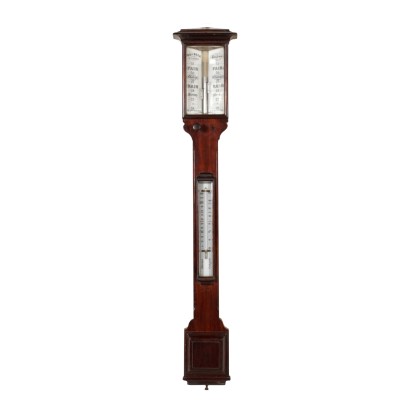Victorian Barometer - Wall Barometer
Features
Wall Barometer
Style: Victorian (1830-1900)
Age: 19th Century / 1801 - 1900
Year: Seconda metà '800
Origin: England
Main essence: Mahogany
Description
A Victorian mahogany Barometer with temperature and humidity indicators. Beveled glass. Manufactured in England, second half of the 19th century.
Product Condition:
Good condition. Wear consistent with age and use. Any damage or loss is displayed as completely as possible in the pictures.
Dimensions (cm):
Height: 104,5
Width: 17,5
Depth: 10,5
Additional Information
Style: Victorian (1830-1900)
This refers to one of the predominant styles used during the Victorian era.Like the latter, it roughly refers to the duration of the reign of Queen Victoria (20 June 1837 - 22 January 1901), from which it took its name.
Characterized by a great expansion of the home furnishing market and by new mechanized production possibilities, but not by great aesthetic innovations, but by the revival of stylistic elements from various previous eras.
Find out more about the Victorian style with our insights:
Writing desk, Arthur Blain, Liverpool c. 1840























